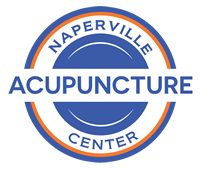 Recently, one of our patients brought up the topic of sound healing. I was intrigued. Back when I was in acupuncture school, there were some students and instructors who were using “acutonics,” which involved placing tuning forks on various acupuncture points. At the time, I was too involved in my studies to investigate further, but I had always been curious. I decided to look into this area and share what I have found so far.
Recently, one of our patients brought up the topic of sound healing. I was intrigued. Back when I was in acupuncture school, there were some students and instructors who were using “acutonics,” which involved placing tuning forks on various acupuncture points. At the time, I was too involved in my studies to investigate further, but I had always been curious. I decided to look into this area and share what I have found so far.
Sound healing is a type of holistic therapy that uses sound frequencies to promote relaxation, reduce stress and anxiety, and promote overall well-being. This practice is based on the idea that sound waves can affect our physical and emotional states. The sounds used in this type of therapy can range from chanting, singing bowls, drums, tuning forks, and more. It’s been gaining popularity in recent years as a way to promote relaxation and balance.
Sound vibrations can affect our bodies in a variety of ways, both physically and emotionally. Here are a few examples:
Physical effects
- Vibrations from sound waves can cause our bodies to resonate, which can have a calming or invigorating effect, depending on the frequency.
- Low-frequency sounds can cause our bodies to vibrate, which can have a soothing effect and may even help reduce pain.
- High-frequency sounds can be stimulating and may increase alertness and energy levels.
Emotional effects
- Certain sounds and frequencies can trigger emotional responses, such as nostalgia, happiness, or even fear.
- Music therapy has been shown to be effective in reducing anxiety and depression, and certain frequencies may be particularly beneficial for emotional well-being.
- Binaural beats, which are auditory illusions created by playing slightly different frequencies in each ear, have been used to induce different mental states, such as relaxation or focus.
Overall, sound vibrations can have a powerful impact on our bodies, both physically and emotionally, and can be used as a tool for healing and well-being.
What is a Frequency?
A frequency, in the context of sound, refers to the rate at which a sound wave vibrates per second.
Frequencies are measured in Hertz (Hz), which is the number of vibrations per second. For example, a sound wave with a frequency of 440 Hz vibrates at a rate of 440 times per second, which is the standard tuning for most modern music.
All sounds have a specific frequency that determines their pitch, and some frequencies are believed to have different effects on our physical and emotional states. For example, high frequencies can be stimulating, while low frequencies can be soothing.
In sound healing, one of the important frequencies is 432 HZ. The theory behind 432 Hz is that it aligns with the vibrations of nature and the universe, and is therefore more harmonious than the standard tuning of 440 Hz. Some people believe that listening to music tuned to 432 Hz can have positive effects on health and well-being, such as reducing anxiety, improving sleep, and even stimulating DNA repair.
The music we are used to revolves around the frequency of 440 Hz. Hertz being the “pitch” of the note. Almost every single song you can think of is tuned this way using a 12 step scale. Many musicians are trained by “ear” to know these 12 steps very well. Tuning to different frequencies, that shifts the 12 steps ever so slightly in pitch. In recent years, tuning A4 to 432 Hz has become more popular in sound healing communities.
Music can be changed from 440 Hz to 432 Hz by imperceptibly slowing down (by 32 hundredths of a tone) the song, using music editing software. While there are many claims to the effectiveness of sound healing, research is only just beginning to accumulate. Interestingly, one paper finds 432 Hz has mild but noticeable effects on heart rate and blood pressure. I will continue to investigate this promising area and share what I have learned. In the meantime, if you wish to experience 432 hz music, there are many songs which can be viewed in different videos on YouTube.
